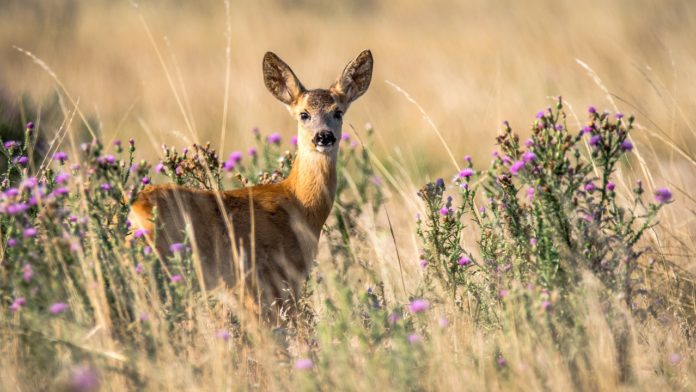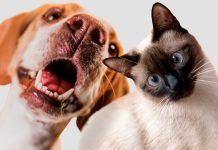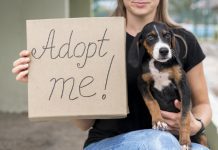
One of my favorite things about Calgary is the animals in my yard. I see deer, skunks, bats, flickers, and owls regularly. The skunk living occasionally under our front porch is called “Fifi la Pew”. I’ve encountered moose, coyotes, snakes, porcupine, deer, and a multitude of bird species on bike paths and walking trails. Calgary’s abundant parks and river valleys bring wildlife deep into the city. Unfortunately, this often puts the wildlife in direct conflict with the human inhabitants.
I no longer allow my small dog into the backyard without light illuminating the yard and our large dog accompanying her. We have not had cougars or bears in our neighbourhood yet, but we do have bobcats. Pets are at risk from predators such as coyotes, large birds of prey, bobcats, and cougars, and even the deer and moose protecting their young. We must use common sense to protect and control our pets interacting with wildlife they might encounter. Never ever encourage wildlife by feeding them directly or putting out food. It breaks down normal behavior and puts both sides at greater risk of conflict. This includes feeding geese or waterfowl that can become very aggressive.
A client recently shared with me how her daughter is threatened by neighbours who insist on putting out peanuts for squirrels. The squirrels cache the peanuts all over the local yards and their daughter is profoundly allergic as are many people.
Good Samaritans are the bane of all baby animals. We spend hours on the phone arguing with well-intentioned determined people desperate to save the baby hare, fawn, or fledgling alone and uninjured. Does leave fawns for long periods of time. Fawns and baby hares are naturally camouflaged and have no scent. Mother hares feed babies incredibly rich milk returning to feed them typically only at dusk and dawn. Baby hares run around within a day of birth. If you find a baby hare in a precarious position like on a road just tuck them somewhere safe nearby and walk away. Animals adapt behaviors to decrease the chance of predators finding their young. Respect this wisdom.
Many people incorrectly think a baby removed from the area cannot be returned. With only a few species, a touch can mean rejection by the parents, more often parent animals will resume their duties.
Fledgling birds on the ground are in the precarious position between leaving the nest and flying. The parent birds will follow the fledgling and feed it on the ground while it learns to fly. If flight school is in your backyard keep children and pets away. If the baby is still a helpless nestling and fell out of the nest too early, return the bird to the nest. If the nest has fallen secure an open container with drainage holes and the fallen nest inside back in the tree. Most baby birds, squirrels, and hares die of infection when people attempt to hand-raise them, not to mention missing out on life lessons from their parents. A wild animal’s best chance of survival is with its parents, NOT you.
If you have concerns about wild creatures in your yard call the Alberta Institute for Wildlife Conservation Hotline. They are a charitable foundation with extensive facilities designed to accept all species of wildlife. They can also give you advice to cope with unwanted wildlife attempting to share your home. Check out their website; www.aiwc.ca.
Most veterinary clinics will take in wildlife. Some animals are held briefly and released, especially the drunken waxwings after eating fermented berries. A few animals are immediately humanely euthanized because their injuries are too severe. Usually animals are examined, treated, and transferred to a licensed rehab facility. An information sheet is filled out for every wild animal admitted, ideally for eventual release to home territory. Volunteer if you really want to learn how to help our wild neighbours.








